The Columbian Exchange was an incredible time across the globe, when among other things, crops of the so-called “New” and “Old” worlds were traded for the first time (or the first time in a long time, depending on what resources you read). Because of new trade routes established across the Atlantic, what we consider the quintessential foods of different European countries were introduced from elsewhere: potatoes to Ireland, tomatoes to Italy, peppers to Hungary, chocolate to Switzerland, and so on.

What is often forgotten is the people of Europe were eating staple edible plants before potatoes and tomatoes entered the scene. There were important food plants filling their larders and cellars that in the 21st century, have nearly been forgotten. They are only briefly mentioned in historical gardening books (if at all) with the forlorn qualifier of “formerly cultivated.” Just because they’ve fallen out of fashion, however, doesn’t mean these plants aren’t still as edible, useful, and sustaining as they were hundreds of years ago.
If you’re interested in self-sufficiency, I believe these plants deserve to return to their place in the garden and pantry. Peruse this list of nearly forgotten foodstuffs, and see if they whet an appetite to grow them for yourselves.
Full disclosure: I have not personally grown all of these plants (yet). As an Ozark homesteader, I’ve been focusing on American-developed native plants whenever possible because I’m in a climate that suits them best. Some of the cool weather, European-originating plants that I’ve tried, just haven’t grown well on a drought-prone, 100-plus degree hill (and I can’t blame them). That said, don’t let my lack of experience deter you from trying these plants for yourself.
Salsify (Tragopogon porrifolius)

Originating around the Mediterranean, Greeks and Romans used salsify, and up until the last century, this dandelion relative was used in both Europe and the United States. In modern times, the hardy plant has fallen out of popularity, but maybe that’s because it’s primed for a long-overdue comeback. It’s extremely cold tolerant and can be stored right in the ground until it’s time to bring a unique flavor to the table.
Salsify is sometimes referred to as oyster plant (its boiled root apparently tastes like oysters) but it’s something I can neither confirm nor deny, having never tried it. Others say it’s more akin to asparagus or artichoke hearts. If you want to bring this classic back, it grows similar to carrots with the same timing and requirements. The leaves and shoots are also edible, and can be eaten raw or cooked.
And finally, owing to its dandelion family heritage, it has a truly lovely bloom. You can find salsify seeds at places like Johnny’s Seeds or Victory Seeds.
Scorzonera (Pseudopodospermum hispanicum)

Scorzonera is similar to salsify proper in every way, and is even sometimes referred to as black salsify. Again, we have a hardy, Mediterranean-originating perennial with a delicious, long-storing root with a similar flavor. And again, we have easy growing in the garden and a familial closeness to dandelions for a plant that has fallen into obscurity in the modern age.
Maybe folks think the ashy-black roots aren’t as pretty as carrots and parsnips, and have passed them over? But now you’ve been enlightened to its potential, and can see the diamond in the rough. If you’re interested in bringing this historical and useful plant back to your gardens, you can buy seeds at Johnny’s Seeds and Hudson Valley Seed.
Skirret (Sium sisarum)

Skirret originated in China but moved west so long ago that it was enjoyed by Romans during their heyday. This unique perennial is in the carrot family, with the hardiness and ease of cultivation shared by its relatives. The roots are used for food, and have a similar sweetness to parsnips and carrots with a potato-like starchiness.
Anyone who is interested in permaculture should already be excited by the descriptors “perennial, easy, and potato-like” to describe a food plant. They are plants on this list that can be stored in the ground through the winter — with a handful of roots dug up when wanted.
With so much edible potential, I find it strange that this formerly-valued plant is all but unknown now. Even finding seeds is a bit difficult. A lot of places I’ve looked have listed it as “out of stock” if they have it in their roster at all. I have seen it offered at Truelove Seeds, The Experimental Farm Network, and Magic Garden Seeds.
Rampion (Campanula rapunculus)

You may have never heard of this root vegetable, but you have heard a story based on it, guaranteed. The long-haired heroine of the Rapunzel story was named after this plant (that’s its name in German, after all). It once held a huge array of names in different languages, including rampion, ramps (not the same as the American Ramp, Allium tricoccum) , biennial rampion, creeping bellflower, Campanule gantelée, Raiponce, Clychlys Erfin, Glockenblume, Rapunzel-Glockenblume, Kauriinkello, Raperonzolo, Raponchigo, Rapunkelklocka, Rapunkolo, Zvonček, Zvonek hlíznatý, and Zvonek řepka. Now that almost no one seems to cultivate it, it has been renamed “bellflower” and is sold as an ornamental plant. But for anyone looking to uncover its secrets, the edible roots and leaves are still there, waiting to be remembered.
The root, which somewhat resembles a parsnip, is reported as tasting like turnips or radishes, depending on what resources you read. The leaves are also edible and are usually given the “use as spinach” designation applied to all nonspinach greens.
You can find rampion seeds over at The Italian Gardener. and Terroir Seeds.
Turnip-Rooted Chervil (Chaerophyllum bulbosum)

This carrot-family relative was a popular plant in the 19th century, especially in its native range of middle and south-eastern Europe, but I’d wager that most 21st century people have never heard of it. I hadn’t until I started doing research for this article. This plant can be stored for a long time, offers starchy roots, and has a flavor that starts out radish-y when eaten fresh, but mellows in cooking to a parsnip-y, chestnut-y, celery-ish taste that would be excellent in stews, soups, or a roasted vegetable medley.
As with many of the plants on this list, they are grown like carrots and parsnips with the notable difference being the seeds need to be stratified in order to sprout. With that in mind, these plants are often planted from seed in the fall, and then harvested the following summer and fall.
I’ve been able to find seeds for this potential-filled plant over at Strictly Medicinal Seeds and The Experimental Farm Network.
Broad Beans or Fava Beans (Vicia faba)

While Native-American domesticated common beans (Phaseolus vulgaris) didn’t make their way to Europe until the Columbian Exchange, that doesn’t mean that Europeans weren’t eating beans. In fact, one bean in particular was hugely important — the fava bean. Archaeological digs in Israel have revealed these beans were domesticated more than 10,000 years ago.
In recent years, your only exposure to fava beans might be a reference to being eaten with a nice Chianti and a liver of horrifying origin, but these legumes offer a lot to those willing to give them some garden space. Unlike heat-loving common beans (Phaseolus vulgaris) and cowpeas (Vigna unguiculata), fava beans are almost absurd in their affinity for cold weather. And I mean cold!
These beans can germinate at temperatures as low as 40 degrees Fahrenheit, which means they can be planted before anything else in the garden. They are eaten fresh, cooked when dried, and their greens are edible.
Fava bean seeds are still pretty easy to find in every seed catalog, though if you look hard, you’ll find more diverse varieties than the Broad Windsor that is the usual offering.
Parsnips

I adore parsnips, and have written about them here. These roots have oversized, big-hipped carrots, and taste like sweet, chestnut-spiced potatoes when cooked. Before the sugar trade made its horrific rampage through history and our health, parsnips were sometimes used as a sweetener. The Romans enjoyed them, and Europeans at large cultivated these hearty roots until the potato shoved them out of the picture as a new long-storage staple.
They have been one of the most tough-as-nails plants I’ve grown, and given my area’s predilection for drought and heat waves, that’s saying something. Like fava beans, they thrive in the cold, and are planted as soon as the soil can be worked in the spring. I consider parsnips to be one of my “easy” vegetables, as I often plant them, then forget them while I tend to more needy produce.
They grow slowly but surely, and can be stored in the ground where they grew through the winter — where they patiently wait and get sweeter through freezing nights.
Parsnips are still widely available in most seed catalogs — you’ll not have any trouble sourcing seed for them.
Turnips (Brassica rapa subsp. rapa)

Turnips get a lame reputation now, which is totally undeserved. These easy-to-grow, cool-season vegetables offer delicious, nutritious greens and large, starchy roots. They can be stored in the root cellar, offering winter nutrition to modern gardeners much as they did the ancients. They have been widely cultivated from Japan to England, with regional variations developed according to the vast number of gardeners who enjoyed them.
My favorite way to enjoy turnips is to cube them, roast them, then add them to a spicy curry. The pungent blend of spices typical to many curries, pairs perfectly with the mellowed, roasted flavor of the roots. Turnip pickles are also a real treat, and they’re especially lovely if pickled with some beets (to turn them pink) and enjoyed with falafel or hummus.
Turnips are also easy to find, seed-wise, though you’ll often be limited to the American Purple Top White Globe variety. It’s a very good turnip, and one I have grown for a few years, but keep in mind there are dozens (if not hundreds) of varieties available. Some have specifically been developed for large, tasty roots, while others put the emphasis on big greens.
I hope that this incomplete list of undeservedly forgotten plant species gives you inspiration to invite these agricultural nerds back to the cool kids table. They may not be well known, but they can still be well loved in your own garden.


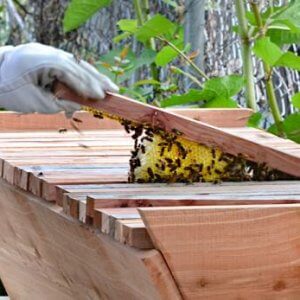








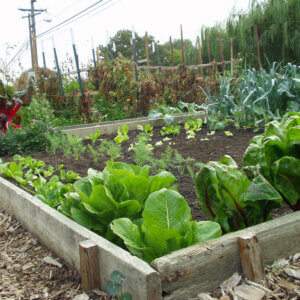










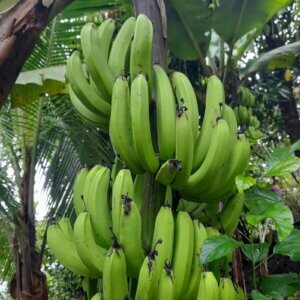




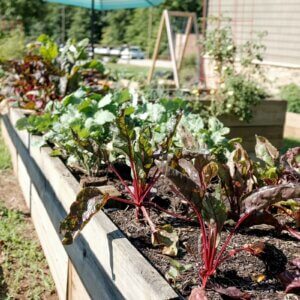




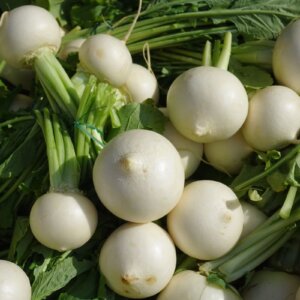








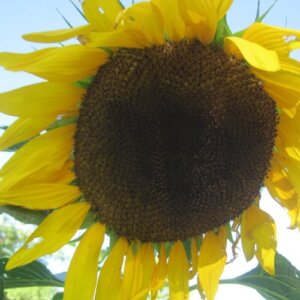
My compliments on the direction of your channel, it appears to be really taking off! It’s a treat to see each issue in my mailbox and I always read your interesting and informative articles.
Warm regards,
Amathonn